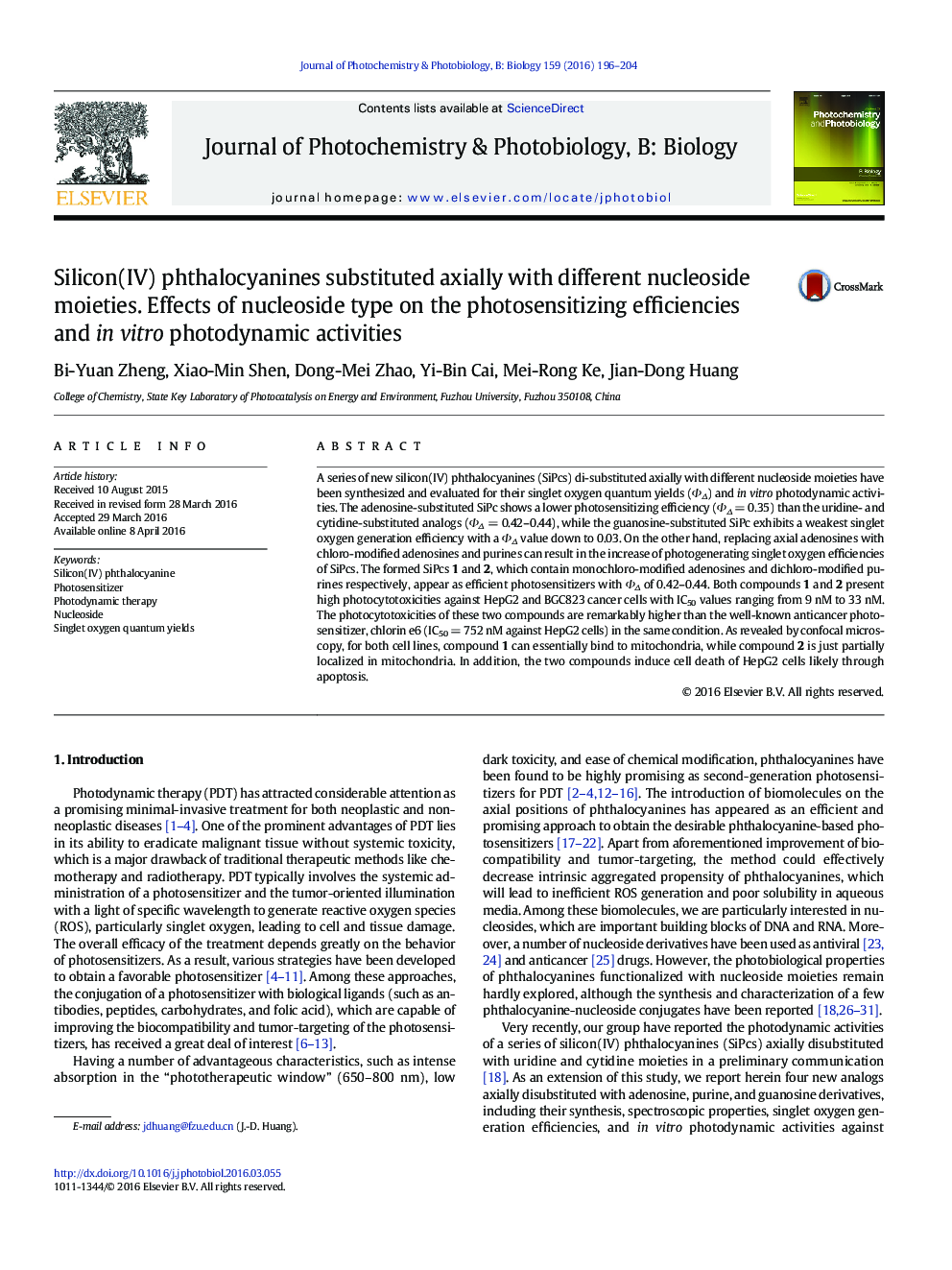| کد مقاله | کد نشریه | سال انتشار | مقاله انگلیسی | نسخه تمام متن |
|---|---|---|---|---|
| 29492 | 44411 | 2016 | 9 صفحه PDF | دانلود رایگان |

• A series of SiPcs substituted with nucleoside moieties have been synthetized.
• The structure–activity relationships of these compounds have been discussed.
• The guanosine-substituted SiPc shows a weak singlet oxygen generation efficiency.
• The monochloro-adenosine-substituted SiPc exhibits the highest photocytotoxicity.
A series of new silicon(IV) phthalocyanines (SiPcs) di-substituted axially with different nucleoside moieties have been synthesized and evaluated for their singlet oxygen quantum yields (ΦΔ) and in vitro photodynamic activities. The adenosine-substituted SiPc shows a lower photosensitizing efficiency (ΦΔ = 0.35) than the uridine- and cytidine-substituted analogs (ΦΔ = 0.42–0.44), while the guanosine-substituted SiPc exhibits a weakest singlet oxygen generation efficiency with a ΦΔ value down to 0.03. On the other hand, replacing axial adenosines with chloro-modified adenosines and purines can result in the increase of photogenerating singlet oxygen efficiencies of SiPcs. The formed SiPcs 1 and 2, which contain monochloro-modified adenosines and dichloro-modified purines respectively, appear as efficient photosensitizers with ΦΔ of 0.42–0.44. Both compounds 1 and 2 present high photocytotoxicities against HepG2 and BGC823 cancer cells with IC50 values ranging from 9 nM to 33 nM. The photocytotoxicities of these two compounds are remarkably higher than the well-known anticancer photosensitizer, chlorin e6 (IC50 = 752 nM against HepG2 cells) in the same condition. As revealed by confocal microscopy, for both cell lines, compound 1 can essentially bind to mitochondria, while compound 2 is just partially localized in mitochondria. In addition, the two compounds induce cell death of HepG2 cells likely through apoptosis.
Graphical AbstractFour novel silicon(IV) phthalocyanines substituted axially with different nucleoside moieties have been synthesized. The two chlorine-containing compounds 1 and 2 show extremely high photocytotoxicity against HepG2 and BGC823 cancer cells and can induce HepG2 cell death mainly through apoptosis. The photocytotoxicities of both compounds are remarkably higher than the well-known anticancer photosensitizer, chlorin e6.Figure optionsDownload as PowerPoint slide
Journal: Journal of Photochemistry and Photobiology B: Biology - Volume 159, June 2016, Pages 196–204